India launches Switzerland’s first satellite
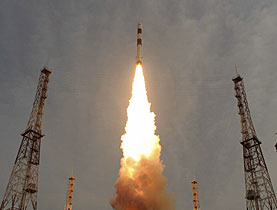
SwissCube, a satellite designed entirely by engineering students, has been successfully launched from a site in India. It is Switzerland's first home-grown satellite.
The mission of the gift box-sized device is to map airglow, the faint bands of green and mauve light caused when the sun’s high-energy radiation collides with atoms and molecules in the upper atmosphere.
“Mission accomplished,” said an emotional Muriel Noca, project coordinator at the Federal Institute of Technology in Lausanne (EPFL). “I can’t believe how smoothly it went as so many things can go wrong.”
The SwissCube blasted off at 08.22 Central European Time (CET) on Wednesday morning from the Satish Dhawan Space Centre in southeastern India, atop the country’s Polar Satellite Launch Vehicle (PSLV).
Twenty minutes later, after ditching the four stages of the rocket, the satellite was placed in orbit at an altitude of 720 kilometres.
A first signal and sign of life brought a huge sigh of relief from the packed EPFL auditorium who came to watch the historic launch.
SwissCube was developed by students from five Swiss engineering schools, three universities and private industry partners, each “bringing their part of the puzzle” under the supervision of the EPFL.
It follows the CubeSat standard, protocols developed by Stanford University and California Polytechnic State University in the United States in 2000, which allow universities and research centres to build their own satellites.
“Building a satellite is something enormous for students. Most of them didn’t know anything about rockets or satellites when they started so we had eight people teaching the 200 students,” explained Maurice Borgeaud, director of the EPFL Space Centre.
“Industry helped a lot, but it’s the first time that a satellite has been built in Switzerland from A-Z.”
Price advantage
The multidisciplinary group took three years to design, construct and test the satellite, which measures 10x10x10 centimetres and weighs 820 grams.
Due to its size and available power (its solar panels will generate 1.5 watts, barely more than a mobile phone), SwissCube cannot compete with much larger satellites, although it is packed with similar systems.
Its advantage is price. The 1,000 components include a mini-telescope, 16 electronic cards and 357 different wires, and all are commercially available. The project, not including the launch, cost around SFr420,000 ($410,000).
The mini satellite was not flying alone on Wednesday, however. SwissCube was packed in alongside the one-ton Indian OceanSat II, designed to identify new fishing regions in the oceans, as well as three other tiny CubeSats: two German and one Turkish.
Long wait
SwissCube had to wait a long time before being launched, however.
In June 2008, the satellite was one of nine CubeSats accepted by European Space Agency (ESA) for the first mission of the new European rocket Vega. However, this programme has been seriously delayed.
After first considering the Americans and Russians, the solution eventually fell to the Indians. Former EPFL students from the Netherlands, who had built their own CubeSat, have created a start-up company, Innovative Solutions in Space (ISIS).
The firm helps projects like EPFL’s find available space for satellites on rocket launchers.
“It’s much easier for us. We just contacted them and they suggested us to the Indians,” said Noca.
Red and green lights
For the EPFL project leader, after the rewarding educational phase and tense launch, “the fun part now begins”.
SwissCube’s scientific mission over the next three to 12 months will be to observe and map airglow.
These are the faint bands of green and mauve light caused when the sun’s high-energy radiation collides with atoms and molecules at an altitude of 80-120 km.
The light phenomenon has been studied in detail up to 80km above the Earth, but not from space, said Noca.
The EPFL hopes that via their study of airglow they can create improved models of upper atmosphere activity, which are important for understanding interactions between the atmosphere and the oceans.
Niche area
The EPFL also wants to build on the success of SwissCube and already has a number of space projects up its sleeve.
“We want to develop a niche area and build slightly bigger satellites up to 10kg,” said Borgeaud. “With those you can do some amazing things but at reduced costs.”
It is presently in discussion with the World Meteorological Organization (WMO) to see how its observational requirements can be met by small satellites.
There is also an interest in using the tiny devices in the fields of astronomy and planetary science, where Switzerland is a world leader.
And another idea is for a “space junk vacuum cleaner”; a satellite to de-orbit space debris, which is a growing problem, said EPFL scientist Anton Ivanov.
“Who better than the Swiss to clear up space,” he smiled.
Simon Bradley in Lausanne (with input from Marc-André Miserez)
Swiss technology has been widely used in space exploration but SwissCube is the first satellite to be designed and made entirely in Switzerland.
Around 200 students from the Lausanne Federal Institute of Technology, Neuchâtel University, the Universities of Applied Sciences of Yverdon, Fribourg, Sion and St Imier, plus several aerospace companies took part in the project.
In total, SwissCube costs SFr530,000, of which SFr110,000 was allocated for the launch.
The project is financed by universities, industry, space research funds and the French-speaking lottery.
SwissCube will be placed in polar orbit, at an altitude of 720km, and will circle the Earth at 7km/second once every 99 minutes.
It will map the airglow, a light phenomenon observed by astronauts at an altitude of about 100km.
Some 80 universities worldwide, including 25 in Europe, have built CubeSats.

In compliance with the JTI standards
More: SWI swissinfo.ch certified by the Journalism Trust Initiative


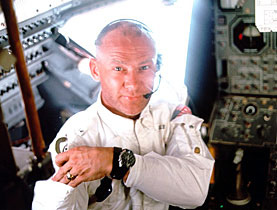

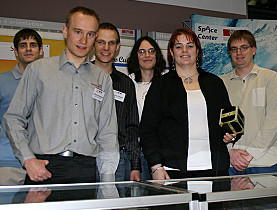
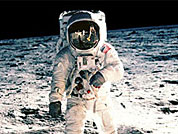
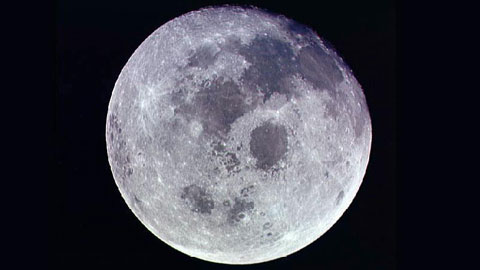
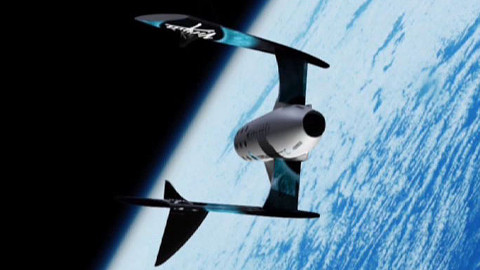
You can find an overview of ongoing debates with our journalists here. Please join us!
If you want to start a conversation about a topic raised in this article or want to report factual errors, email us at english@swissinfo.ch.